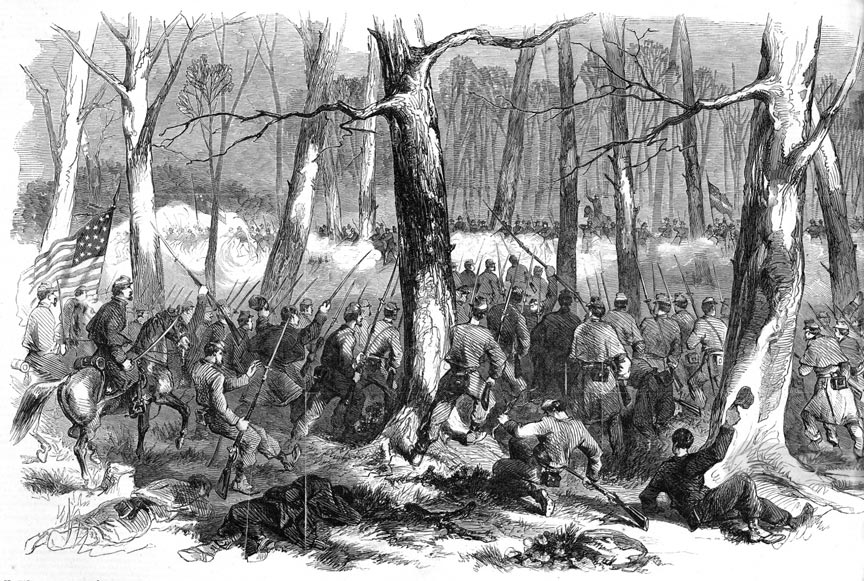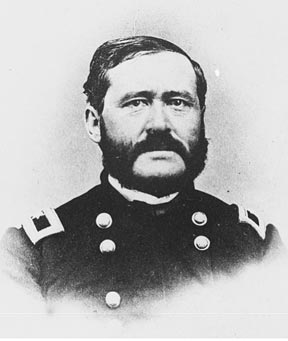
Counterattack of Gen. Lew Wallace’s division at the Battle of Fort Donelson, Tennessee, February 15, 1862. From Frank Leslie’s Illustrated Newspaper, March 15, 1862 (above).
This month marks the 150th anniversary of the Battle of Fort Donelson, fought in the tangled, snow-covered woods of northwestern Tennessee in mid-February 1862. There on February 13 Gen. Ulysses S. Grant’s Union army laid siege to Confederate fortifications surrounding the town of Dover, fortifications that guarded the vital Cumberland River route to Nashville. Bottled up in their trenches were thousands of Confederate defenders. The First Nebraska Volunteer Infantry would help insure that they would not escape, and made an important contribution to the first decisive Union victory of the Civil War.
Grant’s army had failed to break the Confederate lines during brutal fighting on February 13. The next day Union gunboats on the Cumberland River were repulsed by Confederate cannon firing from the shore. In the meantime Union reinforcements reached the battlefield, including the First Nebraska led by Col. John M. Thayer. That night the men of both armies slept fitfully while snow fell upon their camps. Meanwhile the Confederate generals hatched a plan for their army to break out of encirclement and escape to the open countryside.

John M. Thayer of the First Nebraska in Civil War uniform. NSHS RG2720-1a (left).
At dawn on February 15 the Confederates assaulted the Union army’s right and forced the blue-clad soldiers into headlong retreat. By mid-morning the Union line had been broken. Just as the Confederates seemed poised on the brink of victory, Gen. Lew Wallace ordered up the First Nebraska, several Illinois and Ohio regiments, and two cannon batteries to block the Confederates’ decisive attack. When it came, reported Pvt. Thomas Keen, the First Nebraska soldiers “kept up a terrible fire on them” for three quarters of an hour and the enemy withdrew in confusion. The Nebraskans’ performance in their first battle drew General Wallace’s praise: “Their conduct was splendid. They alone repelled the charge.”
After the Confederate attack had been turned back, Grant ordered Union troops at the other end of his line to charge enemy trenches from which troops had been withdrawn to join the morning breakout. This charge captured part of the Confederate lines, giving the Union army the upper hand. The next morning the Confederates surrendered, netting Grant a dramatic victory along with an estimated sixteen to seventeen thousand rebel soldiers as prisoners of war.
Civil War historian Bruce Catton called the Battle of Fort Donelson “one of the most decisive engagements of the entire war.” It was a devastating blow to the Confederate strategic position in the western theater, and Nashville soon became the first rebel state capital to fall to Union forces. What’s more, Grant’s success at Fort Donelson brought him to national attention; he would go on to command all the Union armies by 1864.
Nebraskans can be proud of their regiment’s role in this pivotal Civil War battle. To read more about it, see Benjamin Franklin Cooling, “The First Nebraska Infantry and the Battle of Fort Donelson,” Nebraska History 45 (June 1964); and Cooling, Forts Henry and Donelson: The Key to the Confederate Heartland (Knoxville: University of Tennessee Press, 1987)
– James E. Potter, Senior Research Historian/Publications




